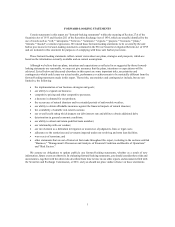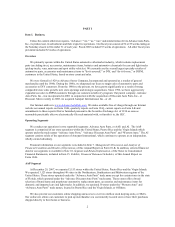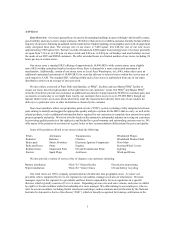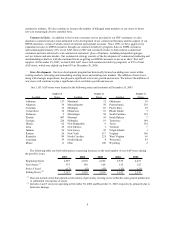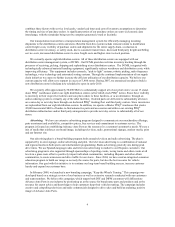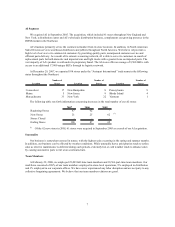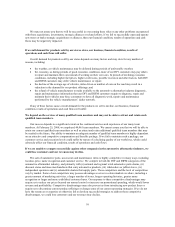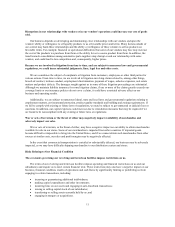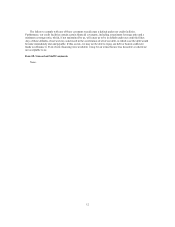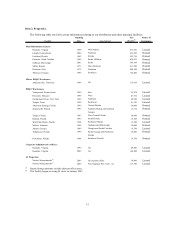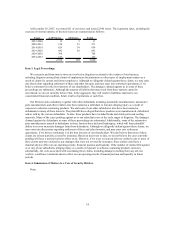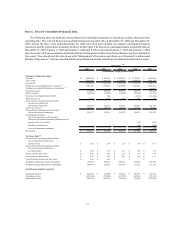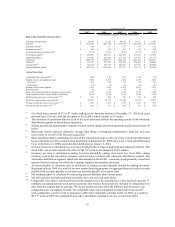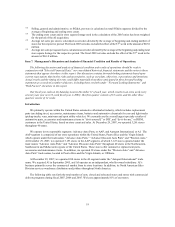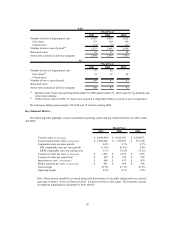Advance Auto Parts 2007 Annual Report Download - page 33
Download and view the complete annual report
Please find page 33 of the 2007 Advance Auto Parts annual report below. You can navigate through the pages in the report by either clicking on the pages listed below, or by using the keyword search tool below to find specific information within the annual report.We may not assure you that we will be successful in overcoming these risks or any other problems encountered
with these acquisitions, investments, strategic alliances or related efforts. If we fail to successfully open and operate
new stores or make strategic acquisitions or alliances, then our financial condition, results of operations and cash
flows may be negatively impacted.
If overall demand for products sold by our stores slows, our business, financial condition, results of
operations and cash flows will suffer.
Overall demand for products sold by our stores depends on many factors and may slow for any number of
reasons, including:
xthe weather, as vehicle maintenance may be deferred during periods of unfavorable weather;
xthe economy, as during periods of good economic conditions, more of our DIY customers may pay others
to repair and maintain their cars instead of working on their own cars. In periods of declining economic
conditions, including higher fuel prices, higher credit costs, possible recession and other factors, both DIY
and DIFM customers may defer vehicle maintenance or repair;
xthe decline of the average age of vehicles, miles driven or number of cars on the road may result in a
reduction in the demand for our product offerings; and
xthe refusal of vehicle manufacturers to make available to the automotive aftermarket industry diagnostic,
repair and maintenance information that our DIY and DIFM customers require to diagnose, repair and
maintain their vehicles may force consumers to have all diagnostic work, repairs and maintenance
performed by the vehicle manufacturers’ dealer network.
If any of these factors cause overall demand for the products we sell to decline, our business, financial
condition, results of operations and cash flows will suffer.
We depend on the services of many qualified team members and may not be able to attract and retain such
qualified team members.
Our success depends to a significant extent on the continued services and experience of our many team
members. At February 25, 2008, we employed 44,065 team members. We cannot assure you that we will be able to
retain our current qualified team members as well as attract and retain additional qualified team members that may
be needed in the future. Our ability to maintain an adequate number of qualified team members is highly dependent
on an attractive and competitive compensation and benefits package. If we fail to maintain such a package, our
customer service and execution levels could suffer by reason of a declining quality of our workforce, which could
adversely affect our financial condition, results of operations and cash flows.
If we are unable to compete successfully against other companies in the automotive aftermarket industry, we
could lose customers and our revenues may decline.
The sale of automotive parts, accessories and maintenance items is highly competitive in many ways, including
location, price, name recognition and customer service. We compete in both the DIY and DIFM categories of the
automotive aftermarket industry, and primarily with (i) national and regional retail automotive parts chains, (ii)
discount stores and mass merchandisers that carry automotive products, (iii) wholesalers or jobber stores, (iv)
independent operators and (v) automobile dealers that supply parts. These competitors and the level of competition
vary by market. Some of our competitors may possess advantages over us in certain markets we share, including a
greater amount of marketing activities, a larger number of stores, longer operating histories, greater name
recognition or larger and more established customer bases. Our response to these competitive disadvantages may
require us to reduce our prices beyond our normal control or increase our promotional spending, which would lower
revenue and profitability. Competitive disadvantages may also prevent us from introducing new product lines or
require us to discontinue current product offerings or change some of our current operating strategies. If we do not
have the resources or expertise or otherwise fail to develop successful strategies to address these competitive
disadvantages, we could lose customers and our revenues may decline.
10



